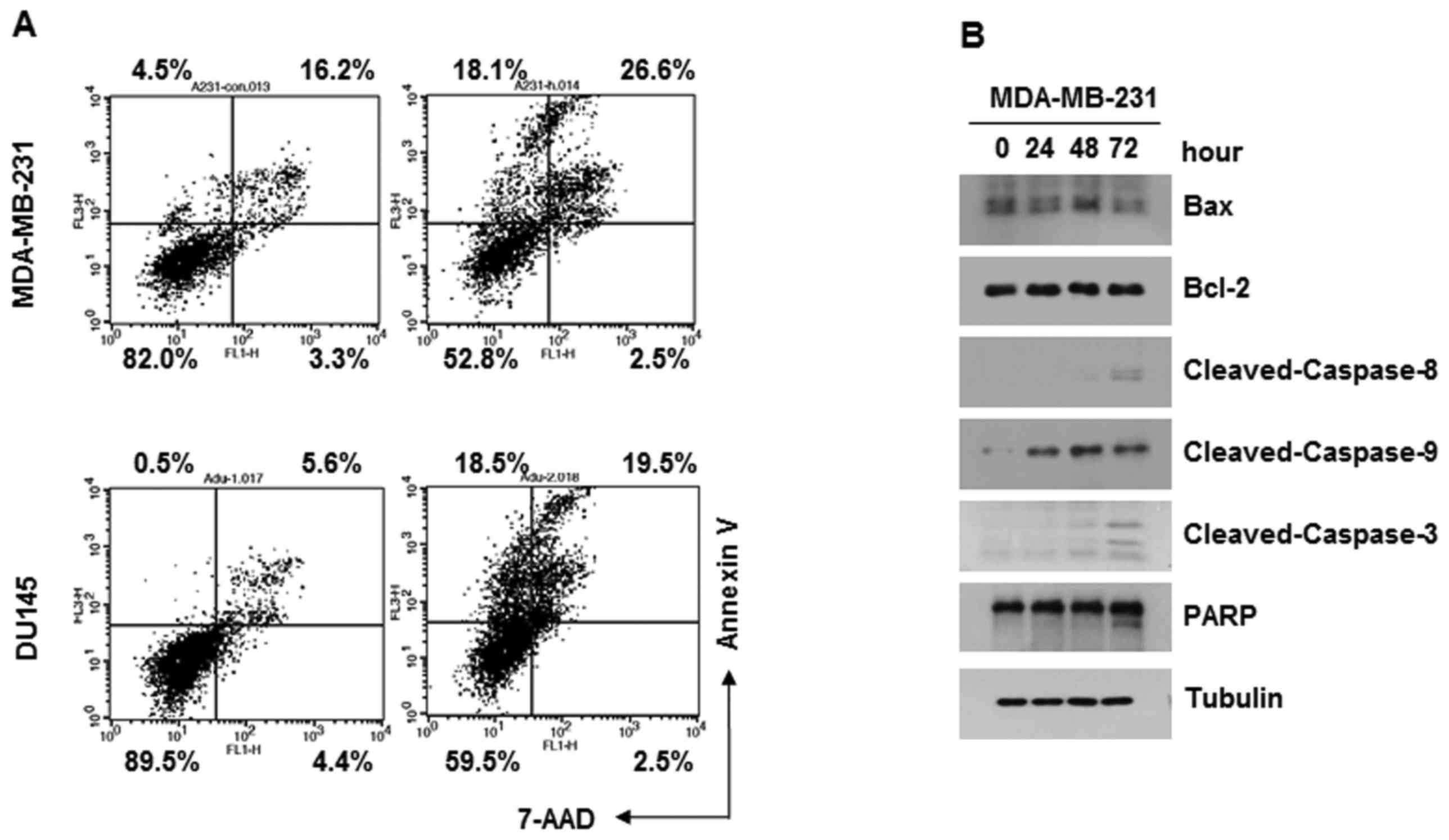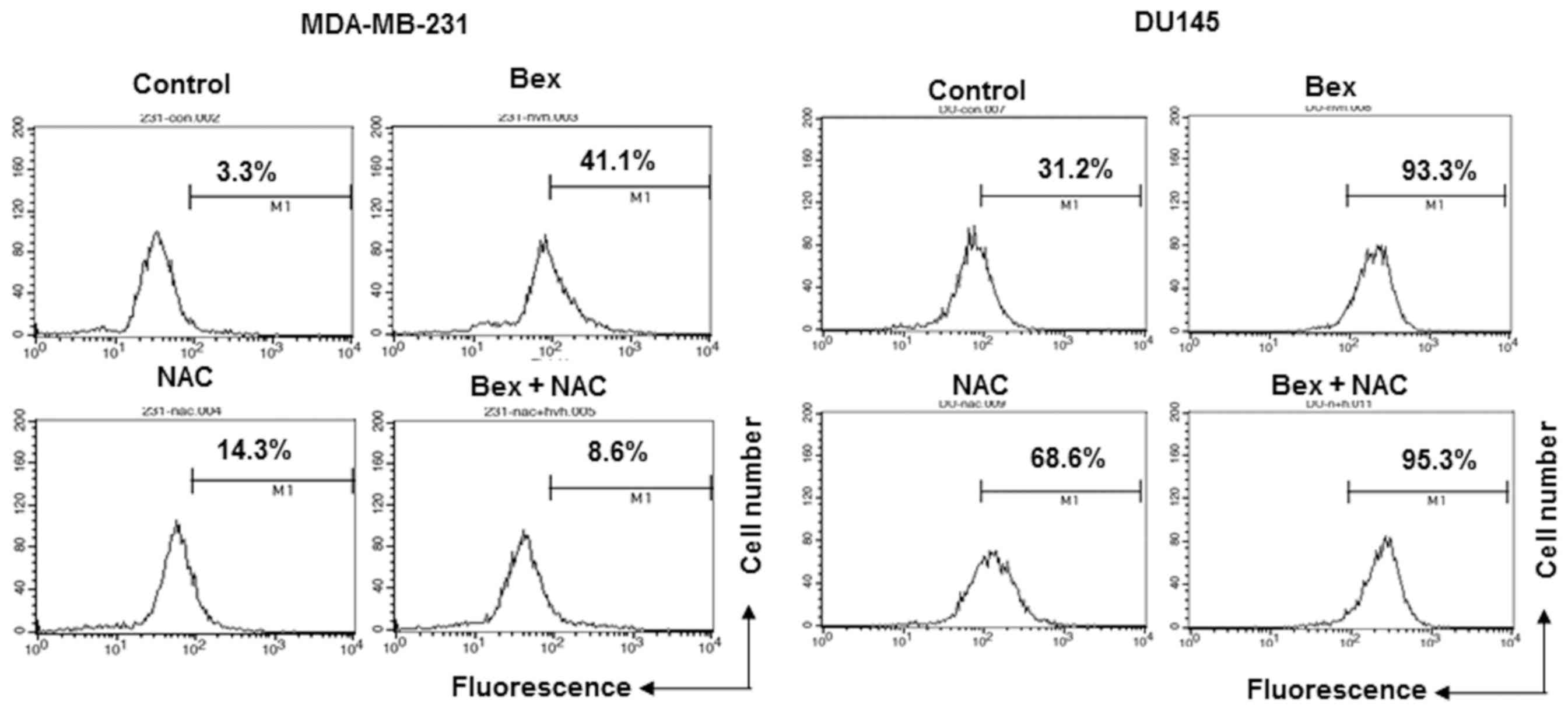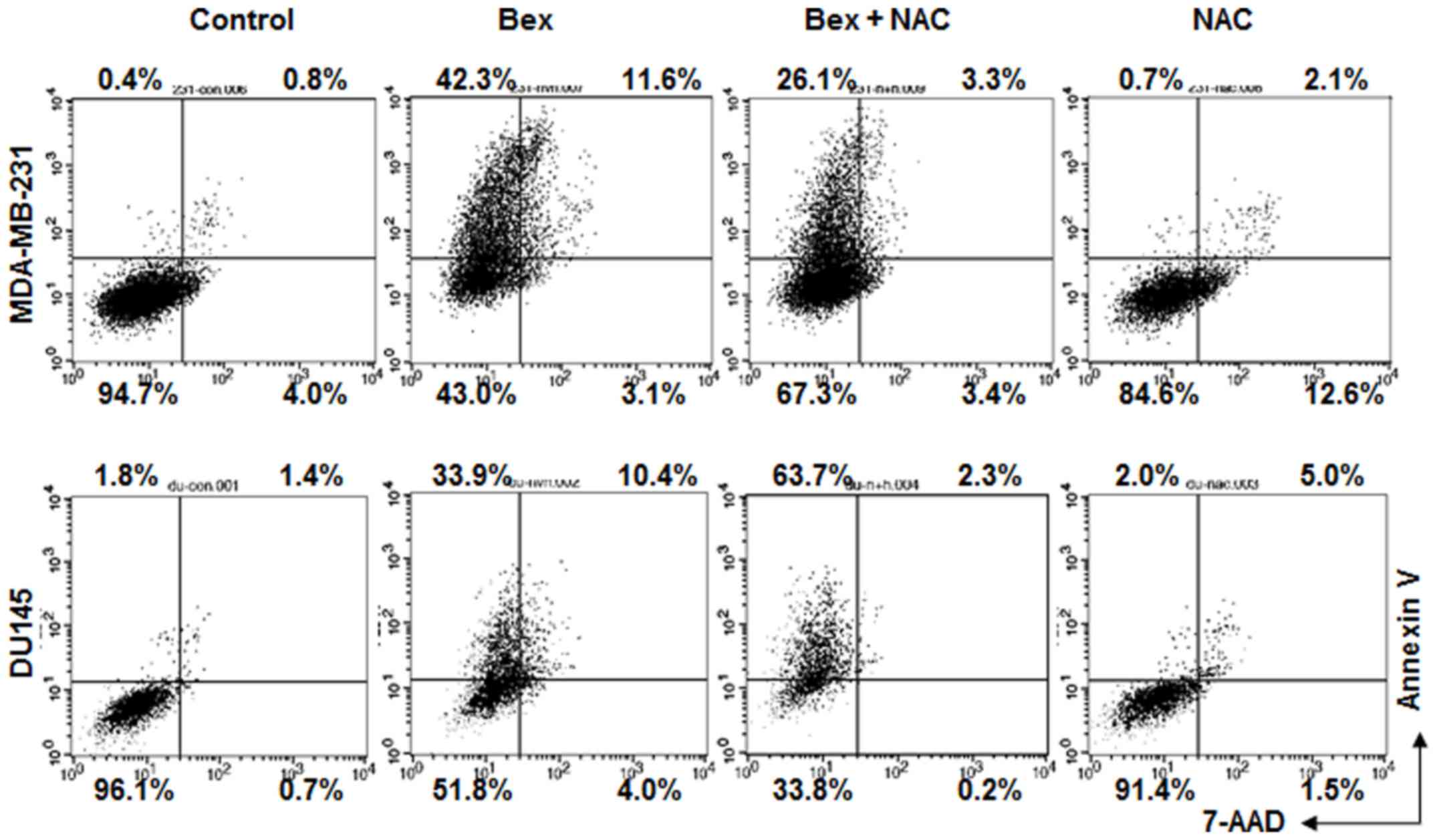|
1
|
de Martel C, Ferlay J, Franceschi S,
Vignat J, Bray F, Forman D and Plummer M: Global burden of cancers
attributable to infections in 2008: A review and synthetic
analysis. Lancet Oncol. 13:607–615. 2012. View Article : Google Scholar : PubMed/NCBI
|
|
2
|
McGuire S: World Cancer Report 2014.
Geneva, Switzerland: World Health Organization, International
Agency for Research on Cancer, WHO Press, 2015. Adv Nutr.
7:418–419. 2016. View Article : Google Scholar : PubMed/NCBI
|
|
3
|
Hare JI, Lammers T, Ashford MB, Puri S,
Storm G and Barry ST: Challenges and strategies in anti-cancer
nanomedicine development: An industry perspective. Adv Drug Deliv
Rev. 1:25–38. 2017. View Article : Google Scholar
|
|
4
|
Dawidczyk CM, Kim C, Park JH, Russell LM,
Lee KH, Pomper MG and Searson PC: State-of-the-art in design rules
for drug delivery platforms: Lessons learned from FDA-approved
nanomedicines. J Control Release. 187:133–144. 2014. View Article : Google Scholar : PubMed/NCBI
|
|
5
|
Bellou S, Pentheroudakis G, Murphy C and
Fotsis T: Anti-angiogenesis in cancer therapy: Hercules and hydra.
Cancer Lett. 338:219–228. 2013. View Article : Google Scholar : PubMed/NCBI
|
|
6
|
Ali I, Wani WA, Saleem K and Haque A:
Platinum compounds: A hope for future cancer chemotherapy.
Anticancer Agents Med Chem. 13:296–306. 2013. View Article : Google Scholar : PubMed/NCBI
|
|
7
|
Fauzee NJ: Taxanes: Promising anti-cancer
drugs. Asian Pac J Cancer Prev. 12:837–851. 2011.PubMed/NCBI
|
|
8
|
Vera-Badillo FE, Al-Mubarak M, Templeton
AJ and Amir E: Benefit and harms of new anti-cancer drugs. Curr
Oncol Rep. 15:270–275. 2013. View Article : Google Scholar : PubMed/NCBI
|
|
9
|
Ghorbani A: Clinical and experimental
studies on polyherbal formulations for diabetes: Current status and
future prospective. J Integr Med. 12:336–345. 2014. View Article : Google Scholar : PubMed/NCBI
|
|
10
|
Jiang M, Yang J, Zhang C, Liu B, Chan K,
Cao H and Lu A: Clinical studies with traditional Chinese medicine
in the past decade and future research and development. Planta Med.
76:2048–2064. 2010. View Article : Google Scholar : PubMed/NCBI
|
|
11
|
Ilyas U, Katare DP, Aeri V and Naseef PP:
A review on hepatoprotective and immunomodulatory herbal plants.
Pharmacogn Rev. 10:66–70. 2016. View Article : Google Scholar : PubMed/NCBI
|
|
12
|
Bahmani M, Shirzad H, Shahinfard N,
Sheivandi L and Rafieian-Kopaei M: Cancer phytotherapy: Recent
views on the role of antioxidant and angiogenesis activities. J
Evid Based Complementary Altern Med. 2156587215625157. 2016.
|
|
13
|
Xu H, Zhao X, Liu X, Xu P, Zhang K and Lin
X: Antitumor effects of traditional Chinese medicine targeting the
cellular apoptotic pathway. Drug Des Devel Ther. 9:2735–2744.
2015.PubMed/NCBI
|
|
14
|
Ichikawa H, Nakamura Y, Kashiwada Y and
Aggarwal BB: Anticancer drugs designed by mother nature: Ancient
drugs but modern targets. Curr Pharm Des. 13:3400–3416. 2007.
View Article : Google Scholar : PubMed/NCBI
|
|
15
|
Poonthananiwatkul B, Howard RL, Williamson
EM and Lim RH: Cancer patients taking herbal medicines: A review of
clinical purposes, associated factors, and perceptions of benefit
or harm. J Ethnopharmacol. 175:58–66. 2015. View Article : Google Scholar : PubMed/NCBI
|
|
16
|
Lee JW, Lee WB, Kim W, Min BI, Lee H and
Cho SH: Traditional herbal medicine for cancer pain: A systematic
review and meta-analysis. Complement Ther Med. 23:265–274. 2015.
View Article : Google Scholar : PubMed/NCBI
|
|
17
|
Leggett S, Koczwara B and Miller M: The
impact of complementary and alternative medicines on cancer
symptoms, treatment side effects, quality of life, and survival in
women with breast cancer - a systematic review. Nutr Cancer.
67:373–391. 2015. View Article : Google Scholar : PubMed/NCBI
|
|
18
|
Bao Y, Kong X, Yang L, Liu R, Shi Z, Li W,
Hua B and Hou W: Complementary and alternative medicine for cancer
pain: An overview of systematic reviews. eCAM.
2014.170396https://doi.org/10.1155/2014/170396PubMed/NCBI
|
|
19
|
Wang CY, Bai XY and Wang CH: Traditional
Chinese medicine: A treasured natural resource of anticancer drug
research and development. Am J Chin Med. 42:543–559. 2014.
View Article : Google Scholar : PubMed/NCBI
|
|
20
|
Ohnishi S and Takeda H: Herbal medicines
for the treatment of cancer chemotherapy-induced side effects.
Front Pharmacol. 6:142015. View Article : Google Scholar : PubMed/NCBI
|
|
21
|
Park B, Jun JH, Jung J, You S and Lee MS:
Herbal medicines for cancer cachexia: Protocol for a systematic
review. BMJ Open. 4:e0050162014. View Article : Google Scholar : PubMed/NCBI
|
|
22
|
Lahouar L, El-Bok S and Achour L:
Therapeutic potential of young green barley leaves in prevention
and treatment of chronic diseases: An overview. Am J Chin Med.
43:1311–1329. 2015. View Article : Google Scholar : PubMed/NCBI
|
|
23
|
Miyazaki Y, Tokunaga Y, Takagaki K,
Tsusaki S, Tachibana H and Yamada K: Effect of dietary cabbage
fermentation extract and young barley leaf powder on immune
function of Sprague-Dawley rats. J Nutr Sci Vitaminol (Tokyo).
47:253–257. 2001. View Article : Google Scholar : PubMed/NCBI
|
|
24
|
Cremer L, Herold A, Avram D and Szegli G:
Inhibitory capacity of some fractions isolated from a green barley
extract upon TNF alpha production by the cells of the THP-1 human
monocytes line. Roum Arch Microbiol Immunol. 55:285–294.
1996.PubMed/NCBI
|
|
25
|
Cremer L, Herold A, Avram D and Szegli G:
A purified green barley extract with modulatory properties upon TNF
alpha and ROS released by human specialised cells isolated from RA
patients. Roum Arch Microbiol Immunol. 57:231–242. 1998.PubMed/NCBI
|
|
26
|
Iguchi T, Kawata A, Watanabe T, Mazumder
TK and Tanabe S: Fermented barley extract suppresses the
development of atopic dermatitis-like skin lesions in NC/Nga mice,
probably by inhibiting inflammatory cytokines. Biosci Biotechnol
Biochem. 73:489–493. 2009. View Article : Google Scholar : PubMed/NCBI
|
|
27
|
Choi KC, Hwang JM, Bang SJ, Son YO, Kim
BT, Kim DH, Lee SA, Chae M, Kim DH and Lee JC: Methanol extract of
the aerial parts of barley (Hordeum vulgare) suppresses
lipopolysaccharide-induced inflammatory responses in vitro and in
vivo. Pharm Biol. 51:1066–1076. 2013. View Article : Google Scholar : PubMed/NCBI
|
|
28
|
Hong H and Jai Maeng W: Effects of malted
barley extract and banaba extract on blood glucose levels in
genetically diabetic mice. J Med Food. 7:487–490. 2004. View Article : Google Scholar : PubMed/NCBI
|
|
29
|
Yu YM, Chang WC, Chang CT, Hsieh CL and
Tsai CE: Effects of young barley leaf extract and antioxidative
vitamins on LDL oxidation and free radical scavenging activities in
type 2 diabetes. Diabetes Metab. 28:107–114. 2002.PubMed/NCBI
|
|
30
|
Robles-Escajeda E, Lerma D, Nyakeriga AM,
Ross JA, Kirken RA, Aguilera RJ and Varela-Ramirez A: Searching in
mother nature for anti-cancer activity: Anti-proliferative and
pro-apoptotic effect elicited by green barley on leukemia/lymphoma
cells. PLoS One. 8:e735082013. View Article : Google Scholar : PubMed/NCBI
|
|
31
|
Ghavami L, Goliaei B, Taghizadeh B and
Nikoofar A: Effects of barley β-glucan on radiation damage in the
human hepatoma cell line HepG2. Mutat Res Genet Toxicol Environ
Mutagen. 775:1–6. 2014. View Article : Google Scholar : PubMed/NCBI
|
|
32
|
Meng TX, Irino N and Kondo R: Melanin
biosynthesis inhibitory activity of a compound isolated from young
green barley (Hordeum vulgare L.) in B16 melanoma cells. J Nat Med.
69:427–431. 2015. View Article : Google Scholar : PubMed/NCBI
|
|
33
|
Ortiz-Martinez M, Winkler R and
García-Lara S: Preventive and therapeutic potential of peptides
from cereals against cancer. J Proteomics. 111:165–183. 2014.
View Article : Google Scholar : PubMed/NCBI
|
|
34
|
Lei Q, Zheng H, Bi J, Wang X, Jiang T, Gao
X, Tian F, Xu M, Wu C, Zhang L, et al: Whole grain intake reduces
pancreatic cancer risk: A meta-analysis of observational studies.
Medicine (Baltimore). 95:e27472016. View Article : Google Scholar : PubMed/NCBI
|
|
35
|
Aune D, Keum N, Giovannucci E, Fadnes LT,
Boffetta P, Greenwood DC, Tonstad S, Vatten LJ, Riboli E and Norat
T: Whole grain consumption and risk of cardiovascular disease,
cancer, and all cause and cause specific mortality: Systematic
review and dose-response meta-analysis of prospective studies. BMJ.
353:i27162016. View Article : Google Scholar : PubMed/NCBI
|


















